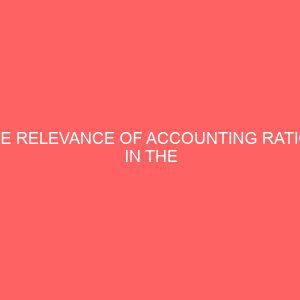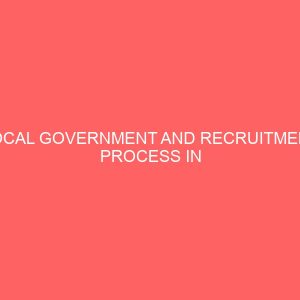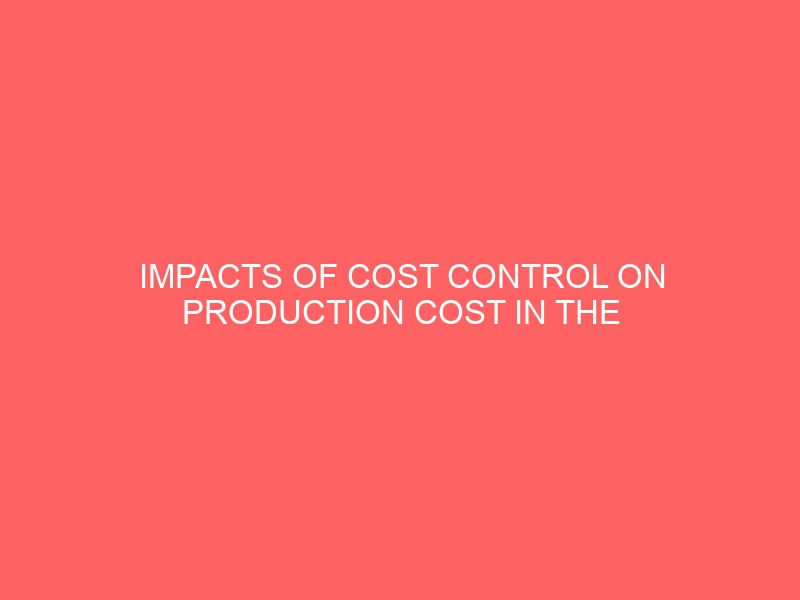Description
THIS RESEARCH IS ON IMPACTS OF COST CONTROL ON PRODUCTION COST IN THE MANUFACTURING INDUSTRIES.
ABSTRACT
Cost control is of utmost importance in every business concern, the negligence of which will affect the earning at any point in time. In controlling costs, wastage is eliminated during the course of production and even during the administrative, selling and distribution activities. A good system of cost control begins with the behavior of workers in the organization as workers are instrumental to the achievement of organizational goals. In carrying out this research, budget was considered as the basic tool for achieving effective cost control and the study was concentrated on Nigerian Eagle flour mill Ltd, where cost control was viewed from a strategic perspective. Chi-square model was used in analyzing the data and the hypotheses tested confirmed positive impact of cost control on production cost in manufacturing industries.
TABLE OF CONTENTS
(i) Title Page
(ii) Approval Page
(iii) Dedication
(iv) Acknowledgement
(v) Abstract
(vi) Table of Content
CHAPTER ONE
1.0 Introduction
1.1 Brief history of Nigeria Eagle flour mill
1.2 The organization structure of Nigeria Eagle flour Mill
1.3 Purpose of the study
1.4 The scope and Limitation of the study
1.5 Definition of terms
1.6 Background of the problem
1.7 Objective of the study
1.8 Statement of Hypotheses
CHAPTER TWO
2.1 Literature Review
2.2 Production Cost
2.3 Nature and Element of Cost
2.4 Costing System and Cost control
2.5 Cost Control Application
2.6 Steps in Cost Control
2.7 Merits of Cost Control
2.8 Cost control in production prerequisites
2.9 Needs for Cost Control in the Industries
2.10 Effective Of Cost Cutting Strategies To Increase Profit Margins
2.11 Method of cost control
CHAPTER THREE
3.0 Research Methodology
3.1 Research Design
3.2 Area of Study
3.3 Sample Frame
3.4 Sample size
3.5 Instrument for data collection
3.6 Primary Data
3.7 Method of data Collection
3.8 Method of Sampling
3.9 Field Survey’s Conduct
3.10 Data Collected
CHAPTER FOUR
4.0 Data presentation, analysis and interpretation, and
testing of Hypotheses
4.1 Presentation of data
4.2 Presentation and analysis of data according to research Questions
4.3 Test of Hypotheses
CHAPTER FIVE
5.0 Summary, Recommendation and Conclusion
5.1 Summary
5.2 Conclusion
5.3 Recommendation
Questionnaire
References
CHAPTER ONE
1.0 INTRODUCTION TO CHAPTER ONE
COST: cost is defined by Chartered Institute of Management Accountants (CIMA), as the amount of expenditure incurred on, or attributable to a specified thing or activity.
It can also be referred to as the expenses incurred, in the course of a business, so as to bring products and services to its present state or site. As the expenditure incurred, in an organization is monitored or controlled, the end-effect is that the income of the organization will be maximized (i.e growing positively) and when the reverse is the case, the company might be suffering from substantial loss incurred in its operations.
However, the main goal for setting up a business or manufacturing company is to be able to make profit or better still for the benefit obtainable from an operation to justify the cost incurred.
Although, manufacturers are now willing to accept as a principle, that costing is of value, there is still a considerable lack of appreciation by many of them as to where its value lies.
In order to achieve this main goal, company may differ from one to another, due to the fact that organization operate from different scope and principles. The general method is the application of cost control on production costing so as to minimize cost and maximize profit in the course of production.
Cost control with particular attention to manufacturing organization cannot be over emphasized for such organization to achieve its primary aim and objective.
Cost control is a broad set of cost accounting methods and management techniques with the common goal of improving business cost efficiency by reducing cost, or at least restricting their rate of growth.
Some cost control advocate believe that strategic cost-cutting must be planned carefully, as not all cost reduction technique yield the same benefit.
Cost control therefore becomes an inheritable and indispensable tool in an organization for a positive result to be realized Needless to mention that there are certain cost that can not be monitored or controlled to a certain degree. Examples are light and heat, rent and interest on loan etc.








Reviews
There are no reviews yet.